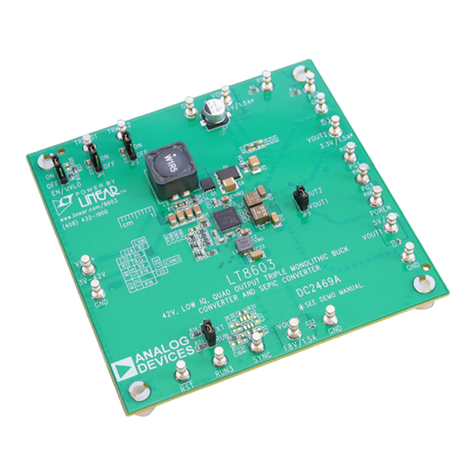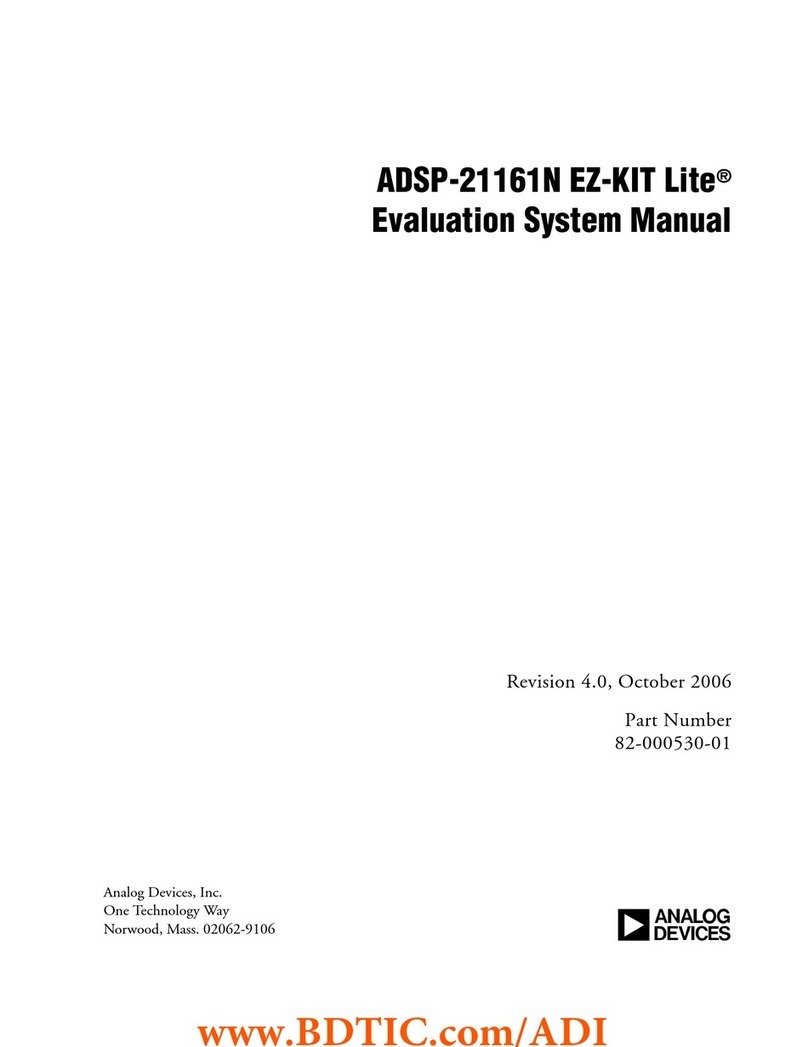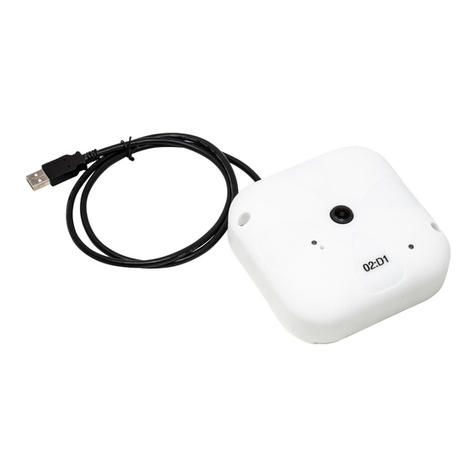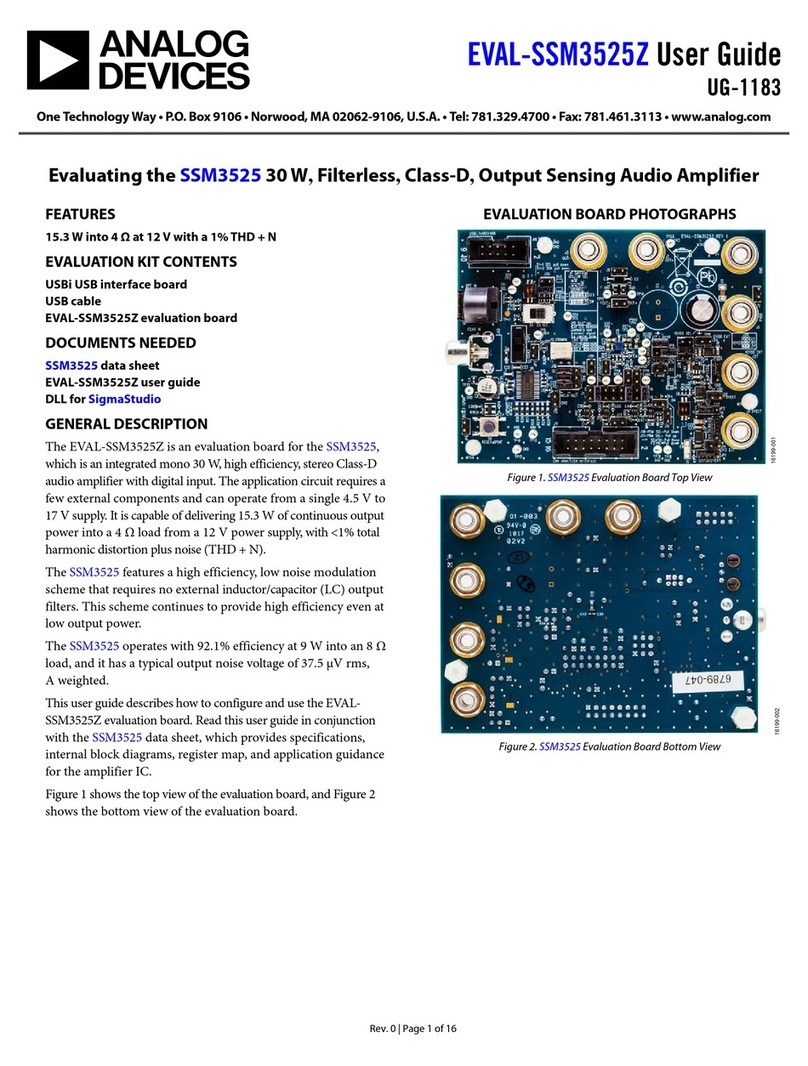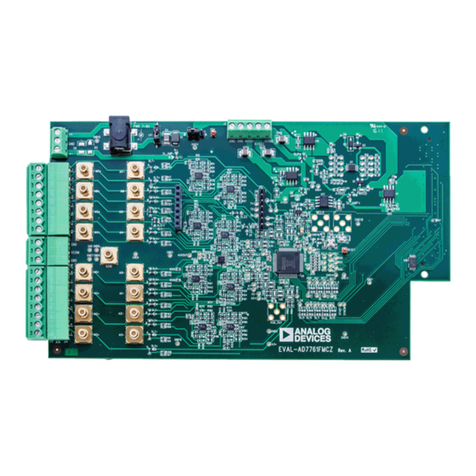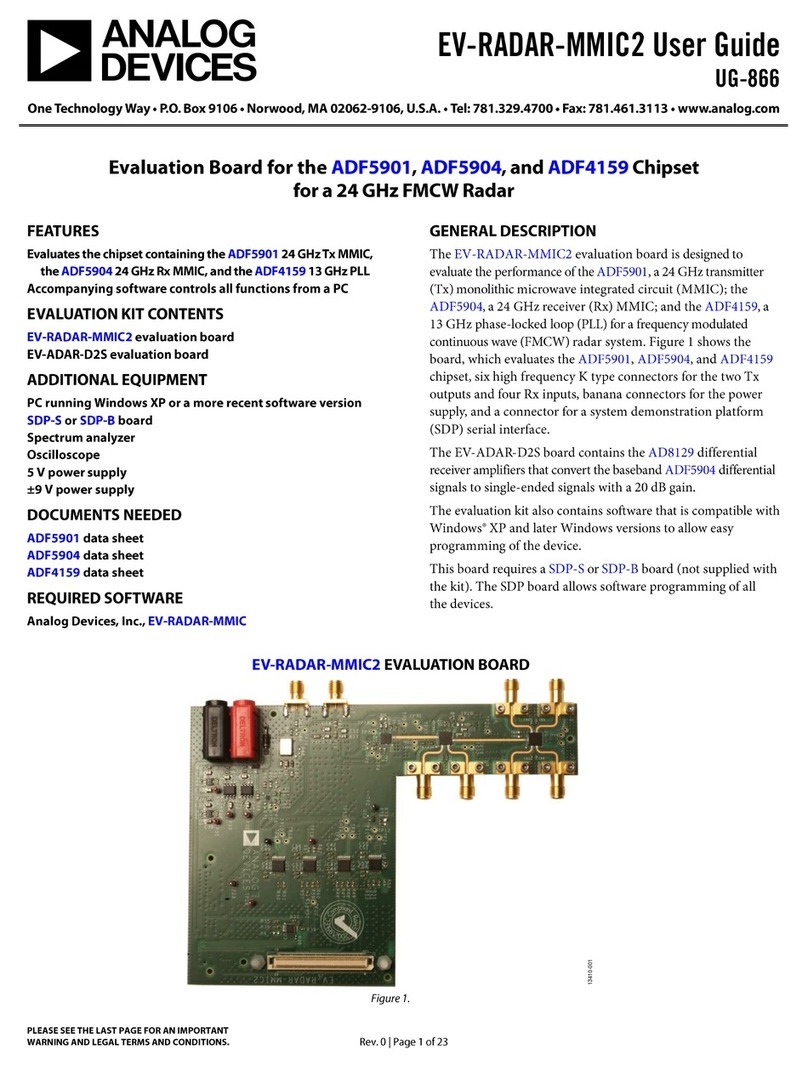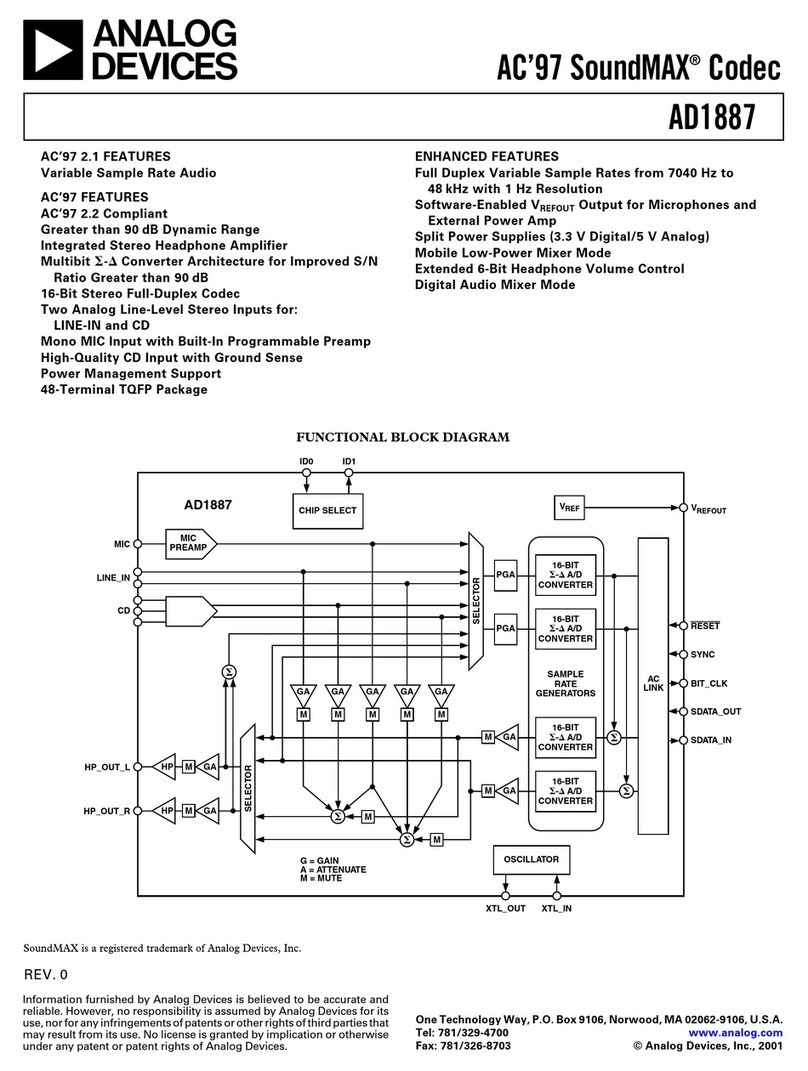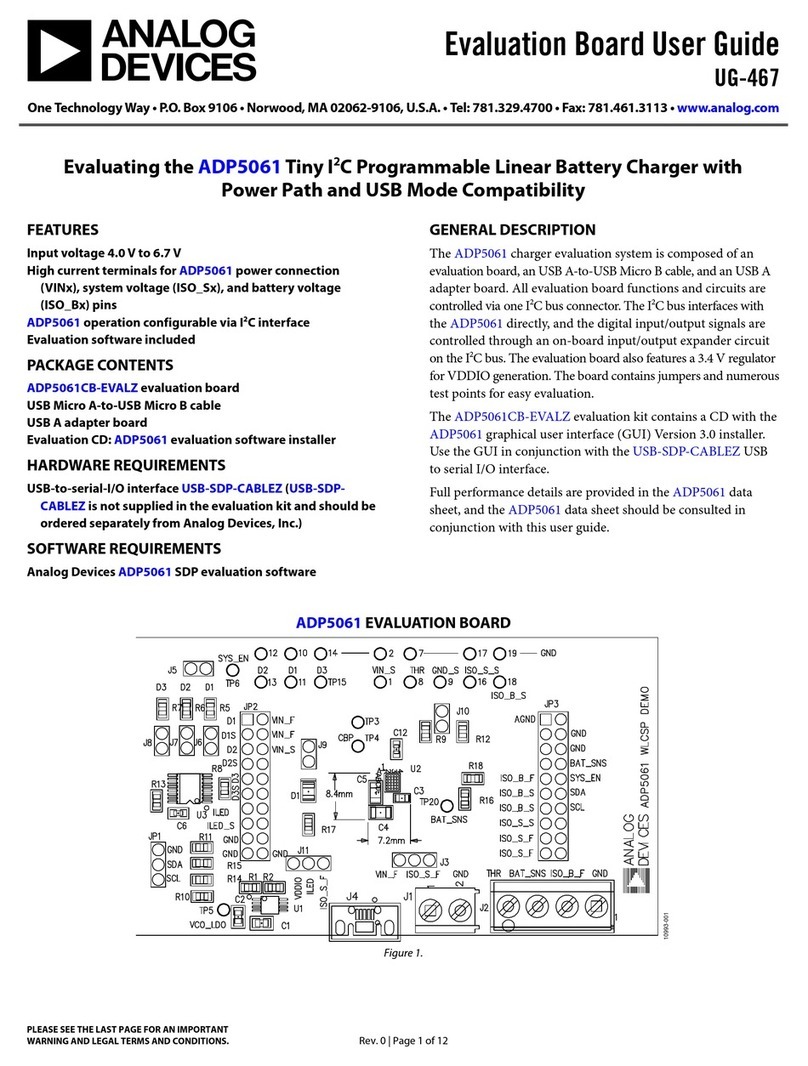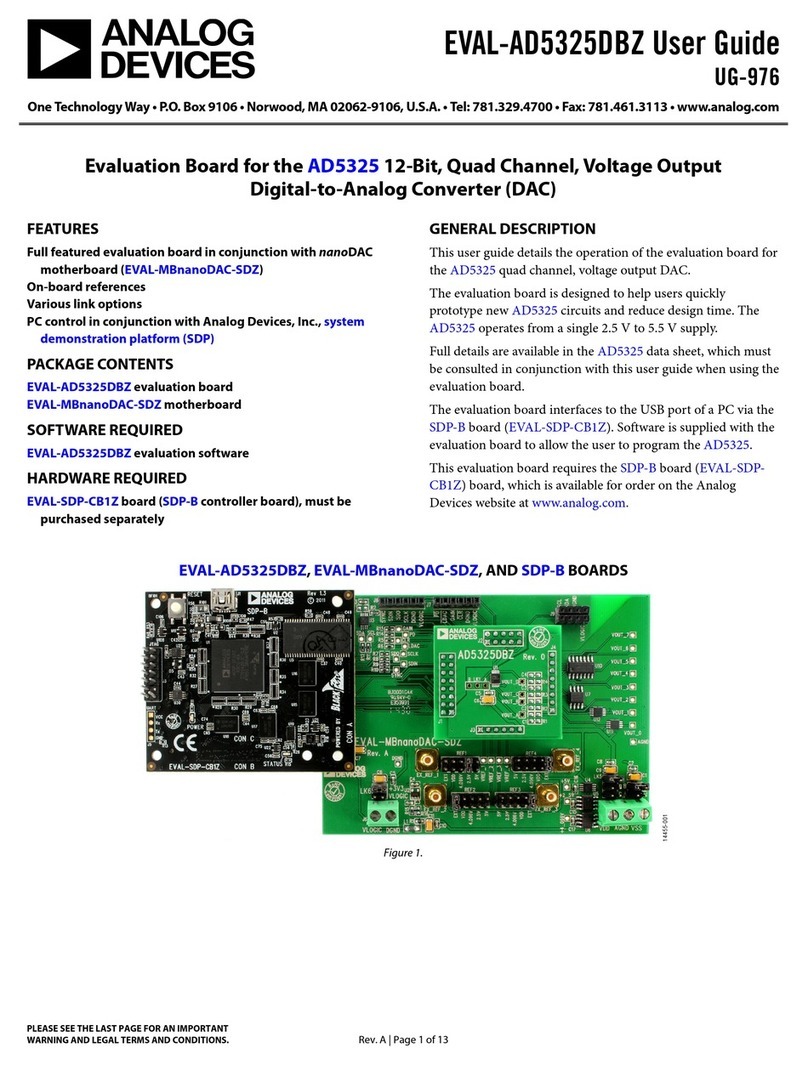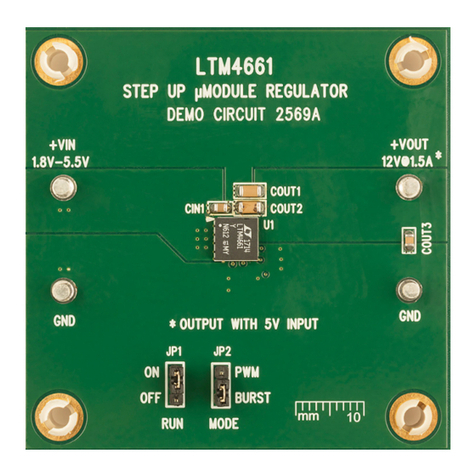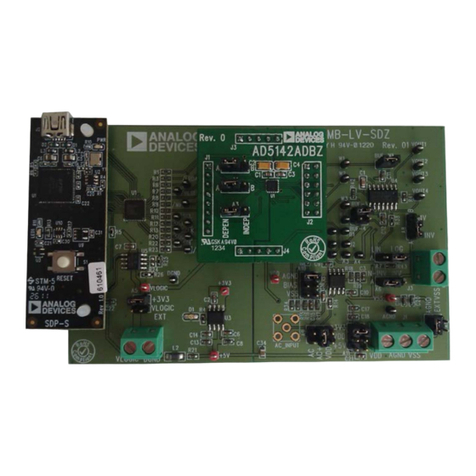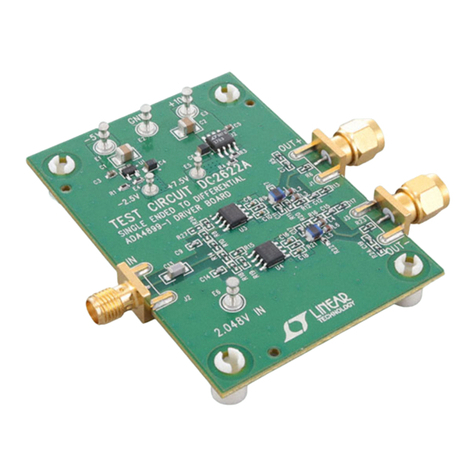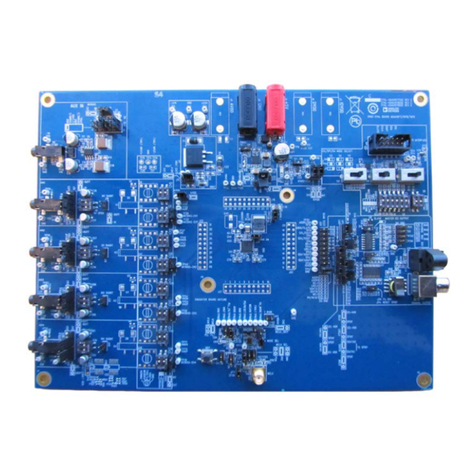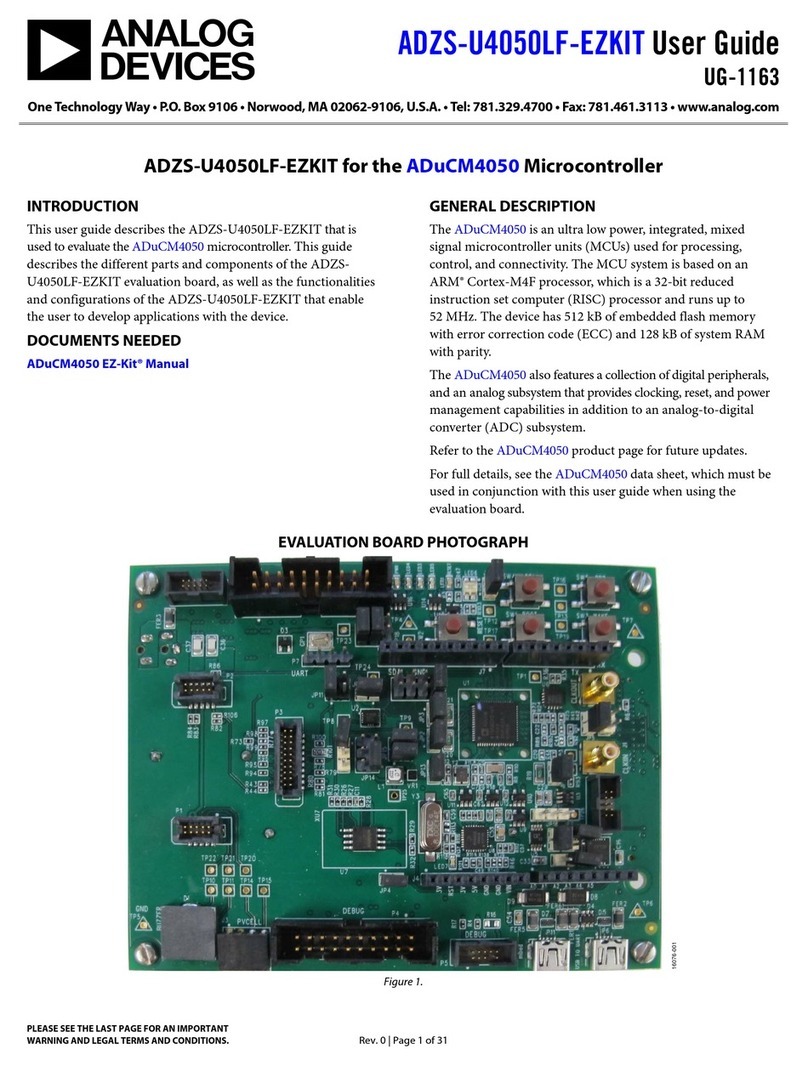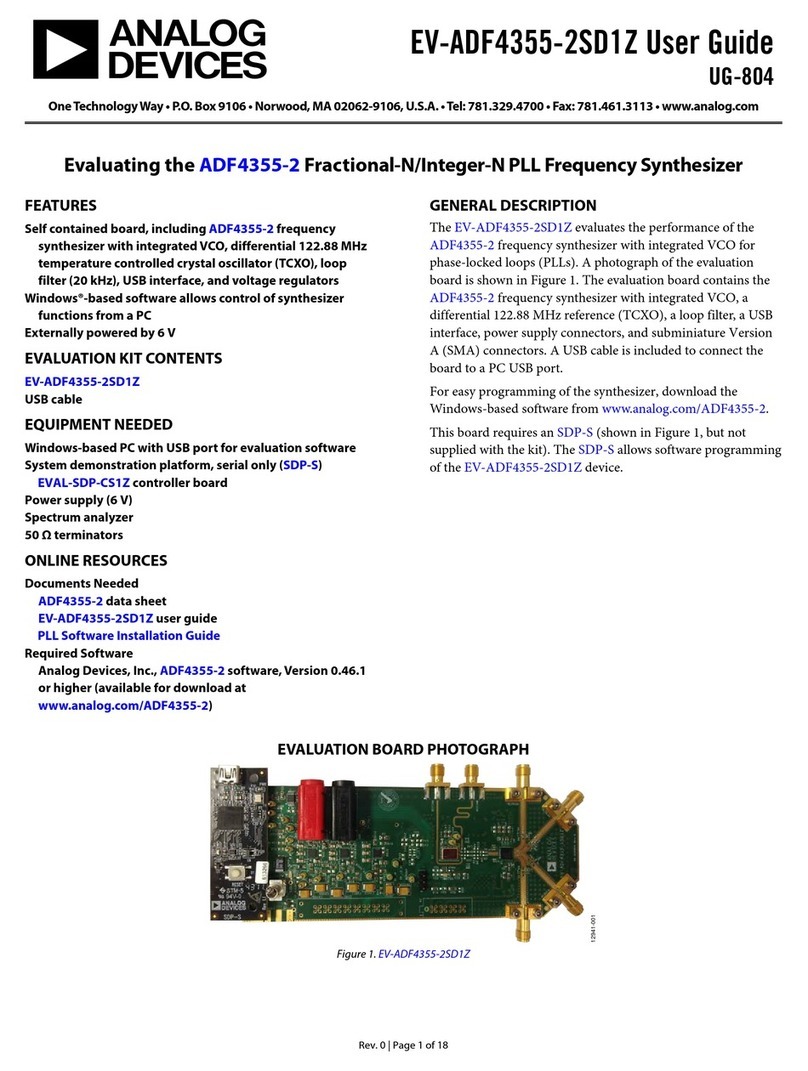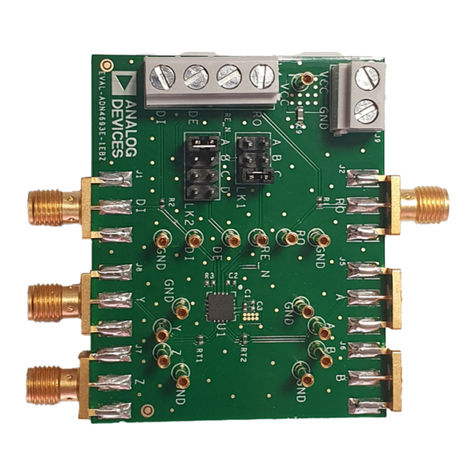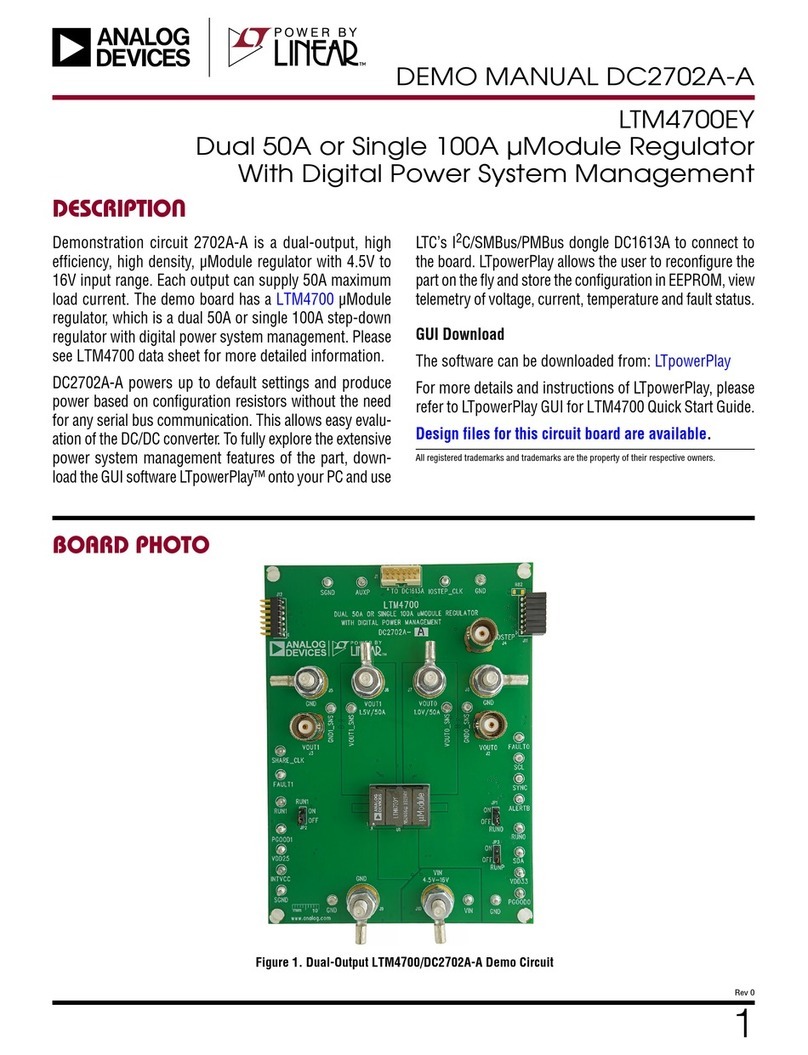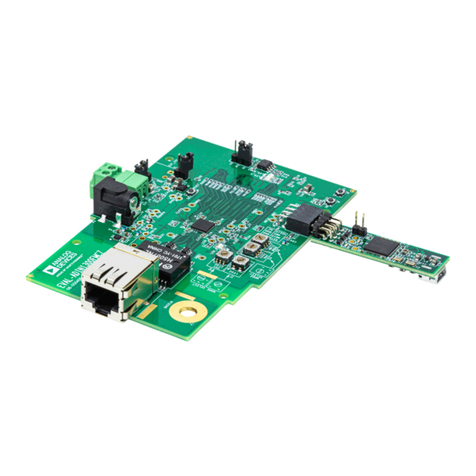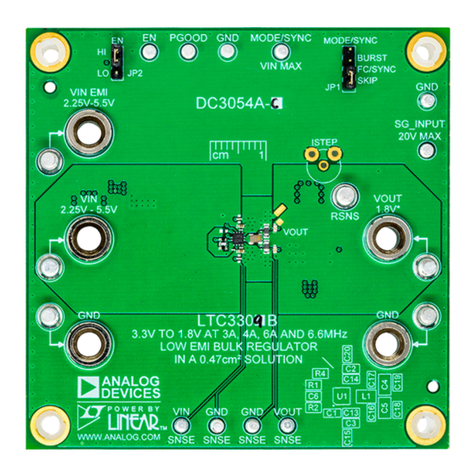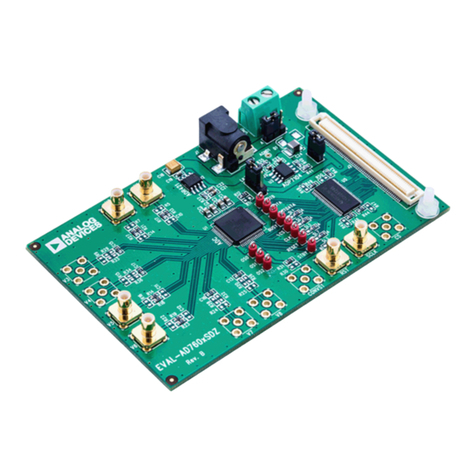
Evaluation Board User Guide UG-232
Rev. 0 | Page 3 of 32
EVALUATION BOARD HARDWARE
The AD6642 and AD6657 evaluation board provides all of the
support circuitry required to operate these parts in their various
modes and configurations. Figure 2 shows the typical bench
characterization setup used to evaluate the ac performance of
the AD6642 or AD6657. It is critical that the signal sources used
for the analog input and clock have very low phase noise (<1 ps
rms jitter) to realize the optimum performance of the signal
chain. Proper filtering of the analog input signal to remove
harmonics and lower the integrated or broadband noise at the
input is necessary to achieve the specified noise performance.
The AD6642 and AD6657 evaluation board covers two general
part families. The boards are populated slightly differently for
each family. The AD6642 is one part supported by this evaluation
board, and the AD6657 is the second part supported by this
evaluation board. The evaluation board supports quad-channel
operation for the AD6657 while supporting dual-channel
operation for the AD6642.
See the Evaluation Board Software Quick Start Procedures section
to get started, and see Figure 20 to Figure 36 for the complete
schematics and layout diagrams. These diagrams demonstrate
the routing and grounding techniques that should be applied at
the system level when designing application boards using these
converters.
POWER SUPPLIES
This evaluation board comes with a wall-mountable switching
power supply that provides a 6 V, 2 A maximum output. Connect
the supply to the rated 100 V ac to the 240 V ac wall outlet at
47 Hz to 63 Hz. The output from the supply is provided through
a 2.1 mm inner diameter jack that connects to the printed circuit
board (PCB) at P201. The 6 V supply is fused and conditioned
on the PCB before connecting to the low dropout linear regulators
(default configuration) that supply the proper bias to each of the
various sections on the board.
The evaluation board can be powered in a nondefault condition
using external bench power supplies. To do this, the E201, E202,
E204, E205, and E207 ferrite beads can be removed to disconnect
the outputs from the on-board LDOs. This enables the user to
bias each section of the board individually. Use P202 and P203
to connect a different supply for each section. A 1.8 V supply is
needed with a 1 A current capability for DUT_AVDD and
DRVDD; however, it is recommended that separate supplies
be used for both analog and digital domains. An additional
supply is also required to supply 1.8 V for digital support circuitry
on the board, DVDD. This should also have a 1 A current
capability and can be combined with DRVDD with little or no
degradation in performance. To operate the evaluation board
using the SPI and alternate clock options, a separate 3.3 V analog
supply is needed in addition to the other supplies. This 3.3 V supply,
or 3P3V_ANALOG, should have a 1 A current capability. This
3.3 V supply is also used to support optional input path amplifiers
(ADL5562) on Channel A and Channel B. An additional supply,
5V_SUPPORT, is used to bias the optional dual input path
amplifier (AD8376) on Channel C and Channel D. If used,
these supplies should each have 1 A current capability.
INPUT SIGNALS
When connecting the clock and analog source, use clean signal
generators with low phase noise, such as the Rohde & Schwarz SMA,
or HP 8644B signal generators or an equivalent. Use a 1 m shielded,
RG-58, 50 Ω coaxial cable for connecting to the evaluation board.
Enter the desired frequency and amplitude (see the Specifications
section in the data sheet of the respective part). When connecting
the analog input source, use of a multipole, narrow-band band-pass
filter with 50 Ω terminations is recommended. Analog Devices, Inc.,
uses TTE and K&L Microwave, Inc., band-pass filters. The filters
should be connected directly to the evaluation board.
If an external clock source is used, it should also be supplied
with a clean signal generator as previously specified. Typically,
most Analog Devices evaluation boards can accept ~2.8 V p-p or
13 dBm sine wave input for the clock.
OUTPUT SIGNALS
The default setup uses the Analog Devices high speed converter
evaluation platform (HSC-ADC-EVALCZ) for data capture.
The output signals from Channel A/Channel B for the AD6642
and Channel A/Channel B/Channel C/Channel D for the AD6657
are routed through P951 and P952, respectively, to the FPGA on
the data capture board.
